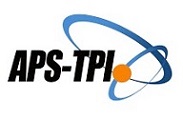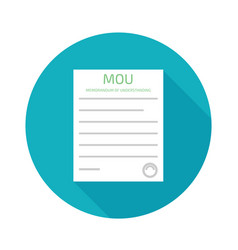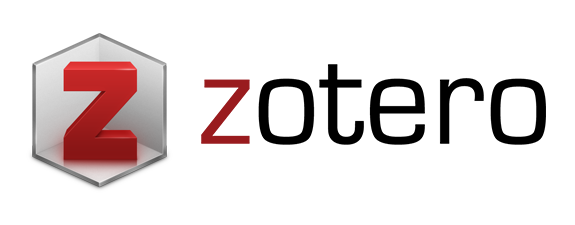Pengembangan Immersive Learning Berbasis Natural User Interface (NUI) Pada Materi Pembelajaran Tenis Meja
Abstract
Abstrak
Pembelajaran modern dengan Immersive learning hadir dengan konsep AR dan VR untuk meningkatkan keterampilan belajar psikomotor siswa. Immersive learning disusun dengan konsep pembelajaran gerakan tenis meja sebagai media pembelajaran menggunakan sensor yang dapat membaca gerak manusia. Penelitian ini bertujuan membantu peserta didik mengetahui tingkat objektivitas dalam mempelajari gerakan dasar tenis meja dengan model pengembangan Lee & Owens. Subjek penelitian menggunakan siswa kelas X SMKN 1 Pasirian sebanyak 10 siswa. Hasil pengembangan yang sudah divalidasi oleh ahli media dan ahli materi mendapat kategori sangat valid. Sedangkan hasil uji coba aplikasi immersive learning ditentukan dengan melihat hasil dari ujicoba perseorangan dengan hasil cukup valid, dan uji lapangan dengan hasil uji yang valid. Hasil ini menunjukan pembelajaran immersive learning tenis meja dinyatakan cukup efektif pada hasil belajarnya. Dengan demikian media pembelajaran immersive learing dapat diimplementasikan sebagai media pembelajaran utama pada proses pembelajaran gerakan dasar tenis meja.
Keywords
Full Text:
PDFReferences
Alexander A., Erwin, Widodo B. (2017). Pengembangan sistem klasifikasi ukuran Pakaian menggunakan metode body Measurement dan fuzzy logic berbasis Sensor Kinect, Journal of Computer Science and Information Systems. Jakarta : Bina Nusantara University.
Arikunto, S. (2010). Prosedur Penelitian Suatu Pendekatan Praktek. Jakarta: PT Rineka Cipta.
Blascovich, J.; Bailenson, J. (2011) Infinite Reality: Avatars, Eternal Life, New Worlds, And The Dawn Of The Virtual Revolution. Harper Collins: New York, Ny, Usa. ISBN 9780062041692
Echeverria, M.A.M., Mancilla, O.C.S., Carillo, F.Q. & Enciso, E.A.F. (2013). Natural User Interfaces to Teach Math on Higher Education. Proceda Social and Behavioral Sciences, 106: 1883–1889. www.sciencedirect.com.
Ferguson, R., Barzilai, S., Ben-Zvi, D., Chinn, C.A., Herodotou, C., Hod, Y., Kali, Y., Kukulska-Hulme, A., Kupermintz, H., McAndrew, P., Rienties, B., Sagy, O., Scanlon, E., Sharples, M., Weller, M., & Whitelock, D. (2017). Innovating Pedagogy 2017: Open University Innovation Report 6. Milton Keynes: The Open University, UK. ISBN 9781473024328
Catuhe, D. (2012). Programming with the Kinect for Windows Software Development Kit. Washington: Microsoft Press A Division of Microsoft Corporation One Microsoft Way
Redmond, Washington 98052-6399 ISBN: 978-0-7356-6681-8
Chiarovano, E., Waele , C., MacDaughall, H. 2015. Maintaining Balance When Looking at A Virtual Reality Three-Dimensional Display of A Field of Moving Dots or at Virtual Reality Scene. Front. Neurol., vol. 6, no. 164, pp. 1-9
Falcao, A. C. Lemos, and M. Soares. (2015). Evaluation of natural user interface: A usability study based on the leap motion device. Procedia Manufacturing, vol. 3, pp. 5490–5495.
Hemmati, M. (2022). The Metaverse: An Urban Revolution. Tourism of Culture, 2(7), 53-60 / Winter 2022 doi: 10.22034/toc.2022.323276.1067
Huda, Miftahul. (2013). Model-model Pengajaran dan Pembelajaran. Yogyakarta: Pustaka Pelajar.
Kean, S., Hall, J.C. & Perry, P. (2011). Meet The Kinect. An Introduction to Programming Natural User Inteface. Apress. ISBN-13 : 978-1430238881
Kurniawan, Citra. (2017). Penerapan Teknologi Natural User Interface (Nui) Sebagai Strategi Pembelajaran Terhadap Retensi Belajar. Jurnal Dimensi Pendidikan dan Pembelajaran Vol. 5 No. 2 Juli 2017
Lee, W. W., & Owens, D. L. (2004). Multimedia-based instructional design: computer-based training, web-based training, distance broadcast training, performance-based solutions. John Wiley & Sons
Lee, E. A., & Wong, K. W. (2014). Learning with desktop virtual reality: Low spatial ability learners are more positively affected. Computers & Education, 79, 49–58. http://doi.org/10.1016/j.compedu.2010.06.006.
Ludwig, T.E., Daniel, D.B., Froman, R. & Mathie, V.A. (2004). Using Multimedia In Classroom Presentations: Best Principles. Society for the Teaching psychology Pedagogical Innovations Task Force, (December): 1–32.
National Center for Educational Statistics (2012b). The Nation’s Report Card: Science (NCES 2012–465). Washington, DC: Institute of Education Sciences, U.S. Department of Education.
New Media Consortium Horizon Project. (2012). Technology Outlook for STEM+ Education 2012-2017. 26.
Pellegrino, J. W. (2016). 21st Century science assessment: The future is now. Menlo Park, CA: SRI International.
Rosa, P.J., Morais, D., Gamito, P. (2016). The Immersive Virtual Reality Experience: A Typology of Users Revealed Through Multiple Correspondence Analysis Combined with Cluster Analysis Technique. Cyberpsychology, Behavior, and Social Networking 2016 19:3, 209-216
Ryan, M. L. (2015). Narrative as virtual reality : Revisiting immersion and interactivity in literature and electronic media (Vol. 2). JHU Press. ISBN 9781421417974
Slater, M., & Wilbur, S. (1997). A framework for immersive virtual environments (FIVE): Speculations on the role of presence in virtual environments. Presence:Teleoperators & Virtual Environments, 6(6), 603–616.
Soepriyanto, Y., & Baskara, D. S. (2017). Rancang Bangun Natural User Interface Berbasis Augmented Reality Dalam Bermain Puzzle Virtual. In Prosiding SEMNAS INOTEK (Seminar Nasional Inovasi Teknologi) (Vol. 1, No. 1, pp. 101-106).
Steuer, J. (1995). Defining virtual reality: Dimensions determining presence. In Communication in the age of virtual reality (pp. 33–56). Hillsdale, NJ: Lawrence Erlbaum Associates.
Sudarmawan dan Dony Ariyus. (2009). Interaksi Manusia dan Komputer. Andi Offset: Yogyakarta.
Suh, A., & Prophet, J. (2018). The state of immersive technology research: A literature analysis. Computers in Human Behavior, 86, 77–90. Veronez, M. R., Gonzaga, L., Bordin, F., Kupssinsku, L., Kannenberg, G. L., Duarte, T., et al. (2018). RIDERS: Road Inspection Driver Simulation. In 25th IEEE conference on virtual reality and 3d user interfaces, VR 2018 - proceedings (pp. 715–716).
Suryani, M., Paulus, E., Farabi, R. (2016). Semi-Immersive Virtual Reality untuk Meningkatkan Motivasi dan Kemampuan Kognitif Siswa dalam Pembelajaran . Prosiding Seminar Nasional Pendidikan Teknik Informatika (SENAPATI 2016) Denpasar – Bali, 27 Agustus 2016 ISSN 2087-2658
Villaroman, N., Rowe, D., Ph, D., Swan, B. & Ph, D. (2011). Teaching Natural User Interaction Using OpenNI and the Microsoft Kinect Sensor. Association for Computing Machinery New York NY United States. Pages 227-232 https://doi.org/10.1145/2047594.2047654
Witmer, B. G., & Singer, M. J. (1998). Measuring presence in virtual environments: A presence questionnaire. Presence, 7(3), 225–240.
Zaveri P. P. et all, (2016). Virtual Reality for Pediatric Sedation: A Randomized Controlled Trial Using Simulation. Cureus, vol. 8, no. 2, pp. 1-11
DOI: http://dx.doi.org/10.17977/um038v5i32022p274
Refbacks
- There are currently no refbacks.
Copyright (c) 2022 Afif Rois Yusro

This work is licensed under a Creative Commons Attribution-ShareAlike 4.0 International License.
JKTP: Jurnal Kajian Teknologi Pendidikan published by Department of Educational Technology, Faculty of Education, State University of Malang in Collaboration with Asosiasi Program Studi Teknologi Pendidikan Indonesia (APS TPI).
Publisher Address:
Lab. Teknologi Pendidikan, Gd.E2, Lt.1
Fakultas Ilmu Pendidikan Universitas Negeri Malang
Jl. Semarang 5, Kota Malang Email: jktp.fip@um.ac.id
========================================================================================================
| INDEXED BY | TOOLS | PLAGIARISM CHECK | ARTICLE TEMPLATE |
|
|

JKTP: Jurnal Kajian Teknologi Pendidikan is licensed under a Creative Commons Attribution-ShareAlike 4.0 International License.
JKTP Statistics (Since July 13th, 2020)





.png)












